Top 10 Most Traded Currencies In The World 2024
Last Updated :
05 Mar, 2024
Explore the dynamic world of currency trading with insights into the Top 10 most traded currencies in the world. Stay updated with the most traded currencies in the world 2023, discover Top 10 most popular currencies, and delve into the realm of the Top ten most traded currencies in the world.
The forex market is the largest financial market in the world, and it is where currencies from different countries are traded against each other. The value of one currency is determined by its exchange rate with another currency. Currencies that are widely accepted and used in international trade and finance are generally considered to be tradeable. A tradeable currency is a type of currency that can be easily bought and sold on the foreign exchange market, also known as the forex market.
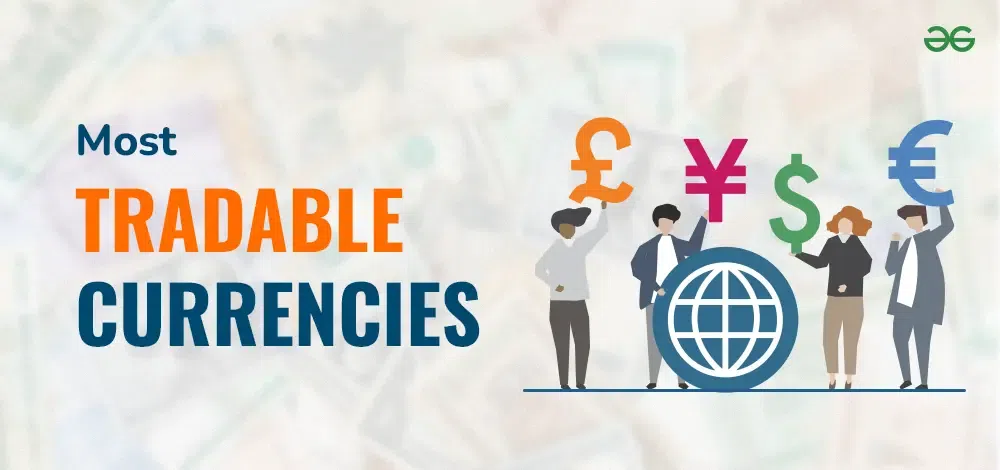
Most traded currencies in the world
The degree of tradeability can vary from currency to currency and it can change depending on the market conditions and the economic conditions of a country. A currency that is considered as less tradeable would be one that is not widely used in international trade and not widely accepted by other countries. The most tradeable currencies tend to have a relatively stable value and a relatively liquid market, making them a good choice for investors and traders who are looking to gain exposure to different currencies.
Top 10 Most Traded Currencies In The World
Here are the Top 10 most traded currencies in the world 2024, based on trading volume data from the foreign exchange market:
US Dollar (USD)
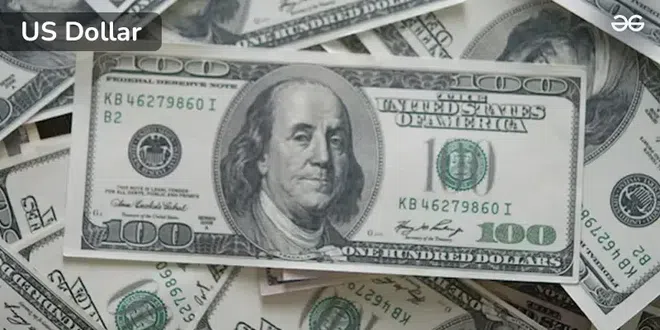
US Dollar (USD)
With nearly 88% of all currency dealings taking place in the US dollar (USD), it is the most traded currency globally. It is extensively utilized as a reserve currency by central banks around the world and is the official currency of the United States. The size and stability of the US economy are two major factors in the USD’s standing as the most traded currency in the world. The largest economy in the world and one that is regarded as being generally stable is the United States, which has contributed to the USD’s status as a safe haven currency. This implies that during periods of economic uncertainty or volatility, investors frequently swarm to the USD.
Euro (EUR)
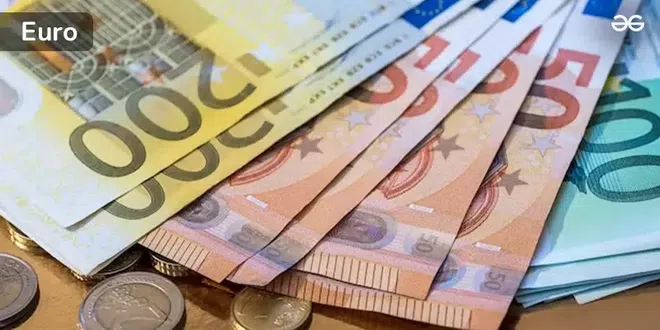
Euro (EUR)
The Euro (EUR) is the official currency of the European Union and is used by 19 of its 27 member countries, collectively known as the Eurozone. It is the second most traded currency in the world, and it is widely used in international trade and finance. The Euro was introduced in 1999 as an electronic currency and began circulating as physical currency in 2002. The idea behind the Euro was to create a single currency for the European Union in order to promote economic integration and stability, and to make it easier for people and businesses to trade across borders within the EU.
Japanese Yen (JPY)
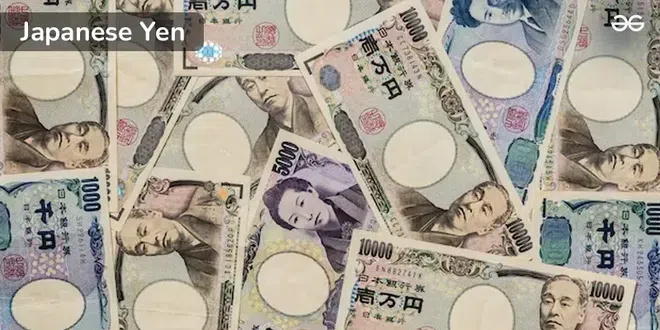
Japanese Yen (JPY)
The third-most traded currency in the world is the Japanese Yen (JPY), which serves as the country of Japan’s legal tender. In international trade and finance, particularly in the Asian region, it is widely employed. The Japanese Yen has a lengthy history and has been accepted as payment in Japan for many years. The complex system of coins and notes that had been in use since the Edo era was replaced by the contemporary version of the Yen, which was adopted in 1871.
British Pound (GBP)
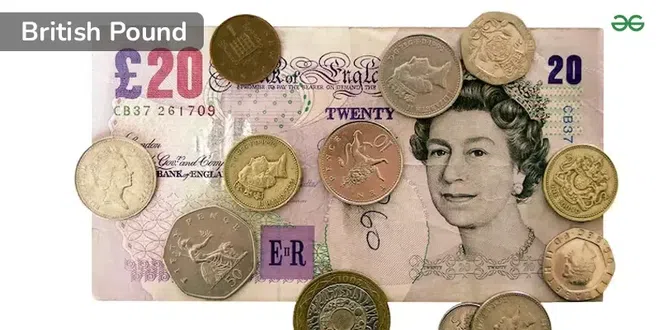
British Pound (GBP)
The fourth-most traded currency in the world is the British pound (GBP), which serves as the official unit of account for the United Kingdom. It has a long history as a significant currency and is frequently used in international trade and finance. The British pound has been used as the official currency of the UK since the 18th century, but its origins date back to the eighth century. The Bank of England, the central bank of the United Kingdom, oversees the creation and circulation of the pound and formulates monetary policy to support price stability and long-term economic expansion.
Australian Dollar (AUD)
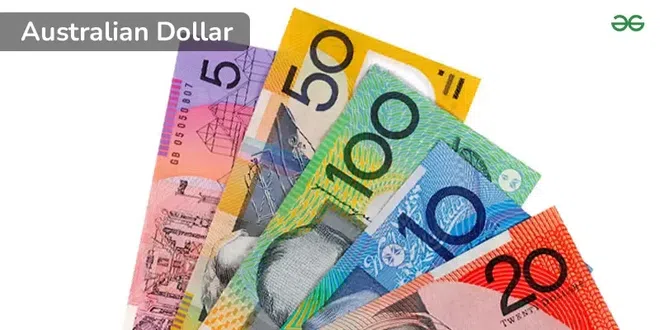
Australian Dollar (AUD)
The fifth-most traded currency in the world is the Australian Dollar, which serves as Australia’s official unit of exchange. Particularly in the Asia-Pacific area, it is widely utilised in international trade and banking. The first Australian banknotes were printed in 1910, giving the Australian Dollar a long history. In 1966, the Australian Pound was replaced with the contemporary Australian Dollar. The Reserve Bank of Australia (RBA), the nation’s central bank, manages the issue and circulation of the AUD and establishes monetary policy to support price stability and long-term economic growth.
Canadian Dollar (CAD)
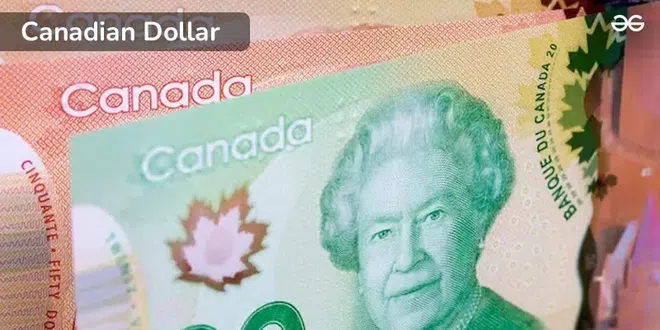
Canadian Dollar (CAD)
The official currency of Canada is the Canadian Dollar (CAD), which ranks as the sixth most traded currency worldwide. In international trade and banking, particularly in the North American region, it is widely utilized. The loon, a bird that is shown on the one-dollar coin, is the source of the nickname “Loonie” for the Canadian dollar. Its exchange rate is based on supply and demand in the foreign exchange market because it is a floating currency. The Bank of Canada oversees the creation and circulation of the Canadian dollar and establishes monetary policy to support stable prices and long-term economic expansion.
Swiss Franc (CHF)
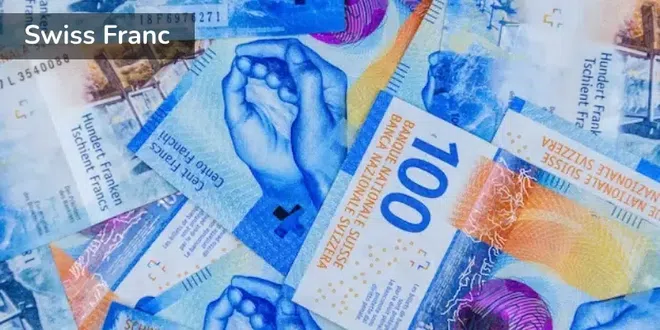
Swiss Franc (CHF)
The seventh most traded currency worldwide is the Swiss Franc (CHF), which serves as Switzerland’s official unit of exchange. In international trade and finance, particularly in the European region, it is widely employed. Since the 18th century, Switzerland has utilized the Swiss Franc as its official form of money. After Switzerland embraced the gold standard in 1850, the current Franc was first issued.
Chinese Renminbi (CNY)
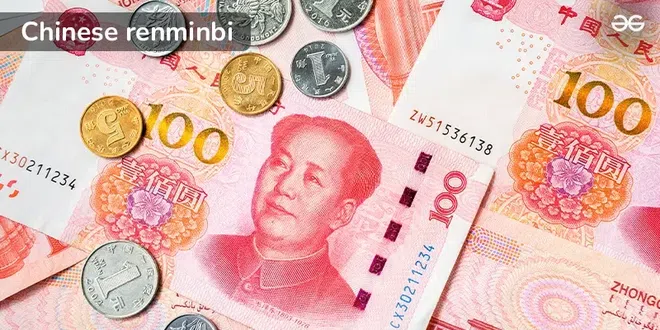
Chinese Renminbi (CNY)
China’s national currency is the Chinese Renminbi (CNY), also referred to as the Chinese Yuan. It is currently the ninth most traded currency in the world, and usage has grown recently as trade ties with China have become more significant and China’s economy has continued to expand. The Renminbi has a lengthy history and has been used as money in China for a very long time. After the People’s Republic of China was established in 1949, the current Renminbi was introduced. The Renminbi is issued and administered by the People’s Bank of China (PBOC), the nation’s central bank.
Hong Kong dollar (HKD)
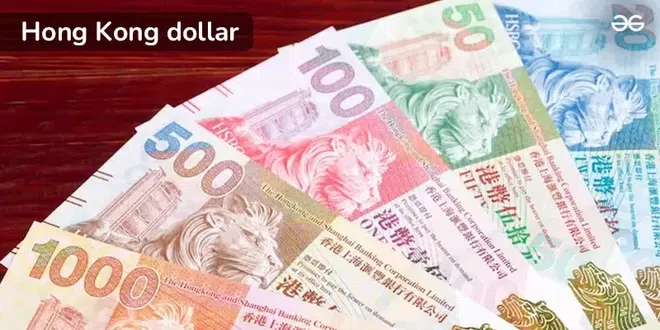
Hong Kong dollar (HKD)
The official currency of Hong Kong is the Hong Kong dollar (HKD), which is tied to the US dollar at a fixed exchange rate of HKD 7.8 = USD 1.0. In order to maintain this fixed exchange rate, the Hong Kong Monetary Authority (HKMA) intervenes in the foreign exchange market. This implies that the value of the HKD is tightly correlated with the value of the US dollar. The Hong Kong dollar is utilized extensively in worldwide trade and banking as a result of the peg, notably in the Asian region. The Hong Kong dollar is a popular currency for both regional investments and cross-border trade.
New Zealand dollar (NZD)
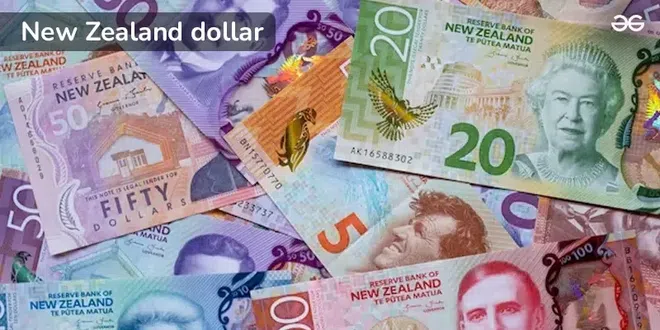
New Zealand dollar (NZD)
The official currency of New Zealand is the New Zealand dollar (NZD), which ranks as the tenth most traded currency globally. Particularly in the Asia-Pacific area, it is widely utilized in international trade and banking. The export of goods, particularly those from the agriculture sector, such as dairy and meat products, is a substantial source of income for New Zealand. As a result, the NZD’s value is tightly correlated with the costs of these goods, which makes it susceptible to changes in the world’s commodity prices.
Top 10 Most Traded Currency Pairs
- EUR/USD (Euro/US Dollar)
- USD/JPY (US Dollar/Japanese Yen)
- GBP/USD (British Pound/US Dollar)
- AUD/USD (Australian Dollar/US Dollar)
- USD/CAD (US Dollar/Canadian Dollar)
- USD/CNY (US Dollar/Chinese Yuan)
- USD/CHF (US Dollar/Swiss Franc)
- EUR/JPY (Euro/Japanese Yen)
- EUR/GBP (Euro/British Pound)
- NZD/USD (New Zealand Dollar/US Dollar)
Top Ten Most Traded Currencies in the World
- US Dollar (USD)
- Euro (EUR)
- Japanese Yen (JPY)
- British Pound (GBP)
- Australian Dollar (AUD)
- Canadian Dollar (CAD)
- Swiss Franc (CHF)
- Chinese Yuan (CNY)
- Swedish Krona (SEK)
- New Zealand Dollar (NZD)
What Are the Top 10 Most Traded Currencies
- Similar to the above list, emphasizing the dominance of these currencies in global trade and forex markets.
Most Profitable Currencies to Trade
- EUR/USD: Offers high liquidity and low spreads.
- USD/JPY: Known for its volatility, providing potential profit opportunities.
- GBP/USD: Offers significant price movements and technical predictability.
- AUD/USD: Commodity currency, influenced by gold prices.
- USD/CAD: Oil prices significantly impact this pair, offering trading opportunities.
Top 10 Most Traded Currencies Worldwide
- Reiterates the importance of the US Dollar, Euro, and other major currencies in global finance and trade.
Top 10 Currencies to Trade
- US Dollar (USD): The world’s primary reserve currency.
- Euro (EUR): Represents the Eurozone, offers stability and volume.
- Japanese Yen (JPY): Preferred for carry trades.
- British Pound (GBP): Known for its liquidity and volatility.
- Australian Dollar (AUD): Influenced by commodity prices.
- Canadian Dollar (CAD): Tied closely to the US economy and oil prices.
- Swiss Franc (CHF): Considered a “safe haven” currency.
- Chinese Yuan (CNY): Growing influence in global trade.
- Swedish Krona (SEK): Represents the Scandinavian market.
- New Zealand Dollar (NZD): Offers opportunities tied to agricultural and trade data.
Methods used to determine the Most Tradable Currencies
There are several methods that can be used to determine the most tradable currencies, each of which may focus on different aspects of the currency market. Some of the common methods include:
- Trading volume: Examining each currency’s trading volume is one of the most popular techniques for identifying the most tradable ones. The amount of money purchased and sold on the foreign exchange market each day can be used to calculate this. Generally speaking, currencies with high trading volumes are thought to be more tradable than those with low volumes.
- Popularity of use: The popularity of the use of a currency in different parts of the world can affect its tradability. The more widely a currency is used, the more tradable it tends to be.
- Market liquidity: Market liquidity is the ease with which a currency can be purchased and sold without having an impact on its exchange rate. High liquidity currencies are thought to be more tradeable than low liquidity currencies.
- Economic indicators: The value of a currency can be impacted by economic indices such as GDP, inflation, and interest rates. In general, it is thought that currencies from nations with robust and stable economies are more marketable.
- Geopolitical factors: A currency’s value can be significantly impacted by political and social stability, conflict, and other geopolitical issues. These elements may affect how tradeable a currency is.
Conclusion
In conclusion, the most tradable currencies in the world are those that are widely accepted and used in international trade and finance. These currencies are typically characterized by high trading volumes, market liquidity, and economic stability. Despite the challenges facing some of these currencies, such as fluctuations in commodity prices or political uncertainty, they remain highly tradeable due to their widespread acceptance and use.
Traders and investors looking to gain exposure to different currencies can find opportunities in these markets. It is important to keep in mind that the rankings and tradeability of currencies can change over time depending on the market conditions and economic conditions of a country, so it’s important to stay informed and monitor the situation.
Also Check:
Top 10 Most Popular Currencies – FAQs
What Makes a Currency Highly Tradable?
- Stability: Low inflation and political stability attract traders.
- Liquidity: High volume of trading ensures easier transactions.
- Economic Policies: Transparent and predictable policies increase tradability.
- Market Size: Currencies from large economies are more traded.
How Do Currency Pairs Work in Trading?
- Currency trading involves buying one currency while selling another, known as a pair (e.g., EUR/USD).
- The first currency (base) is bought, and the second (quote) is sold, based on speculation of their value changes.
What Are the Benefits of Trading in the Most Popular Currencies?
- Liquidity: Easier to buy/sell without affecting the price.
- Lower Spreads: Costs are lower due to high competition.
- More Information: Abundant analysis and data available.
- Volatility: Popular currencies offer profitable trading opportunities.
How Has the List of Top Traded Currencies Changed Recently?
- The list remains relatively stable, with the USD, EUR, and JPY consistently at the top.
- The CNY has seen increased trading due to China’s growing economic influence.
- Emerging market currencies occasionally enter the top traded based on economic developments and investor interest.
Which is the most traded currency in the world?
The US dollar is the most traded currency in the world, representing about 88% of all currency trades.
Why is the US dollar considered the most tradable currency?
The US dollar is considered the most tradable currency because of its widespread acceptance and use in international trade and finance. It is also considered a safe haven currency and is widely used as a reserve currency by central banks around the world.
What are the top 10 most traded currencies as of now?
U.S. Dollar (USD), Euro (EUR), Japanese Yen (JPY), British Pound (GBP), Australian Dollar (AUD), Canadian Dollar (CAD), Swiss Franc (CHF), Chinese Yuan (CNY), Hong Kong Dollar (HKD), New Zealand Dollar (NZD).
Why is the U.S. Dollar the world’s most traded currency?
Its global acceptance, stability, and the U.S. economy’s size make it the primary reserve currency worldwide.
How has the Euro’s position changed in global trade recently?
The Euro remains strong, second only to the USD, with its role in international reserves and transactions relatively stable.
What factors contribute to a currency’s tradability?
Economic stability, liquidity, global acceptance, and backing by a strong economy are key factors.
Are there any new entrants in the list of most traded currencies?
The list remains fairly consistent, with the Chinese Yuan gaining prominence due to China’s economic growth.
Which emerging market currency is on the rise?
The Chinese Yuan (CNY) is notable for its increasing inclusion in global transactions and reserves.
How do central banks influence the forex market?
Through monetary policy, setting interest rates, and occasionally direct market intervention to stabilize or adjust their currency’s value.
Can geopolitical tensions impact currency trading?
Yes, geopolitical events can cause market volatility, affecting the liquidity and value of currencies.
Are cryptocurrencies challenging traditional currencies in trading?
Cryptocurrencies are becoming more popular but face challenges like volatility and regulatory acceptance, keeping them less tradable than fiat currencies for now.
Where can I find the latest data on currency trading volumes?
Financial news platforms, forex trading sites, and market analysis tools provide up-to-date information on trading volumes.
What is a safe haven currency?
A safe haven currency is a currency that is considered to be a stable and secure investment during times of economic uncertainty. These currencies are often used as a hedge against risk, as investors seek a relatively stable place to park their money. Examples include the US dollar, the Euro, the Swiss franc and the Japanese Yen
How do you determine the most tradable currencies?
The most tradable currencies can be determined using several methods, including trading volume, market liquidity, economic indicators, geopolitical factors, and popularity of use.
Can a currency be less tradeable at some times and more tradeable in other times?
Yes, a currency’s tradeability can change over time depending on the market conditions and economic conditions of a country.
Similar Reads
List of Top 10 Largest National Parks in the World
List of Top 10 Largest National Parks in the World: The top 10 national parks in the world are Northeast Greenland National Park, Kavir National Park, Quttinirpaaq National Park, Namib- Naukluft National Park, Wrangle- St. Elias National Park, Central Kalahari Game Reserve, Wood Buffalo National Par
14 min read
Top 10 deserts of the world and World's largest desert
Embark on a journey through the vast expanses of the Earth's surface as we unveil the mysteries of the world's largest desert and explore the top 10 deserts of the world. These magnificent landscapes, ranging from the icy stretches of the polar regions to the scorching sands of the tropics, represen
11 min read
List of Top 10 Largest Metro Networks In The World
List of Top 10 Largest Metro Networks In The World: The Top 10 Largest Metro Networks In The World are Shanghai Metro(China), Beijing Subway(China), London Underground(United Kingdom), Guangzhou Metro(China), New York City Subway(United States), Delhi Metro(India), Moscow Metro(Russia), Wuhan Metro(
12 min read
Largest Meat Exporting Countries 2024
The top 10 meat exporting countries play a major role in satisfying the increasing global demand for meat products. Worldwide meat exports are an essential component of the global food market, with several countries playing key roles as major meat exporters. Studying the top ten meat exporting count
9 min read
Top 10 Largest Meat Producing Countries in the World
List of Top 10 Largest Meat Producing Countries in the World: The top 10 largest meat-producing countries are China, the United States, Brazil, India, Russia, Germany, Mexico, Spain, Argentina, and France. The largest meat-producing country is China with production of 253,024,735 tonnes of meat in 2
10 min read
List of Top 15 Gold-Producing Countries in the World
Primary Gold-Producing Countries: China is known to be one of the biggest contributors when it comes to primary gold-producing countries. Gold mining takes place in many nations throughout the world. It is a timeless sign of success and wealth. Some countries come into mind when you think about gold
9 min read
Top 10 Poultry Producing Countries in the World
Discover the global landscape of poultry production, including the Top 10 poultry producing countries, Largest poultry producers in the world, Leading poultry producing nations, and Major poultry exporters in the world. The poultry sector has experienced tremendous growth in recent decades, driven b
10 min read
Top 10: Most Played Online Games in the World [In 2024]
Multiplayer online battle arena (MOBA) games, massively multiplayer online role-playing games (MMORPGs), first-person shooter games, and battle royal games are some of the most played games right now. Online gaming necessitates a working internet connection and frequently involves direct communicati
9 min read
Top 20 most spoken language in the world 2024
Uncover the linguistic landscape with insights into the Most spoken languages in the world 2024. Explore the Top 20 most spoken language in the world 2024, and delve into the rankings of the Top 10 most spoken language in the world 2024. Additionally, contemplate the future as we ponder What will be
14 min read
Top 10 Largest Cities in the World by Area [2024]
As of October 2023, Tokyo, the capital of Japan is the most populous city in the world with over 37 million inhabitants. India’s New Delhi and China’s Shanghai rank 2nd and 3rd respectively. The biggest cities in the world are usually considered centers of culture, economy, and politics. In this art
15+ min read
Top 10 Largest Economies in the World in 2024
Largest Economies in the World - There are numerous rich nations on this planet with economies worth more than 5 trillion USD. However, just because a country is wealthy does not imply that its citizens must also be wealthy. A GDP, or Gross Domestic Product, can be used to determine a nation's wealt
8 min read
List of Top 15 Most Famous Bridges in the World
The 15 Most Famous Bridges in the World are well known for their amazing views, historical significance, and unique architectural design. Bridges are more than just buildings joining two locations. They represent achievements in design, engineering, and human creativity. Several amazing bridges arou
13 min read
Top 10 Longest Rivers in the World 2024
List of Top 10 Longest Rivers in the World: Rivers are a crucial component of the ecosystem of the planet since they supply many populations with transportation, food, and water. In addition, they are essential for forming the landscape, providing habitat for numerous animals, and sustaining civiliz
10 min read
Top 10 Most Traded Currencies In The World 2024
Explore the dynamic world of currency trading with insights into the Top 10 most traded currencies in the world. Stay updated with the most traded currencies in the world 2023, discover Top 10 most popular currencies, and delve into the realm of the Top ten most traded currencies in the world. The f
13 min read
Top 8 Best High Protein Foods
High Protein Foods: Keeping the body healthy is the first prerequisite to a healthy mind and soul. A healthy diet forms the basis for a healthy body. And while thinking about healthy diets, proteins become an irreplaceable constituent of our diets. Whether you are a fitness fanatic, an ordinary work
9 min read
Top 10 High-Protein Vegetables Must Add in Your Diet
Protein is very necessary for supporting the immune system, tissue growth and repair, hormone and enzyme production, and tissue maintenance. While the first thing that comes to mind when considering protein sources is frequently animal products, there are a variety of plant-based alternatives that c
7 min read
Top 10 Largest Film Industries in the World
From Hollywood's big adventures to Bollywood's colorful stories and Nollywood's exciting tales, every film industry has its special way of telling stories. We'll explore what makes each place unique and how they share their movies with the world. Whether it's action-packed, full of songs and dances,
7 min read
Top 10 Greatest Kings in the World
Explore the grandeur of history as we present the Top 10 greatest kings in the world, featuring the Top 10 powerful kings in the world and Top 10 strongest king in the world of all time in 2024. Delve into the World best king list, showcasing their enduring influence and historical significance. Kin
8 min read
List of Top 10 Greatest Warriors in History
Top 10 Greatest Warriors in History: There are countless stories in the annals of history about famous warriors who made a lasting impression on the globe. These people have led armies to tremendous successes and sometimes catastrophic defeats via their unmatched bravery, strategic ability, and perh
5 min read
Top 10 Oldest Countries in the World 2024
Exploring the world's top 10 oldest countries is like stepping into a time machine, journeying back thousands of years to witness the birth of civilization. From Egypt's pyramids to Japan's temples, each country has its own tale to tell. The top 10 oldest countries in the world are Egypt, China, Ira
15+ min read
Top 10 Largest Pearl Producing Countries in the World
Discover the Top 10 Singapore export products and delve into the Global pearl production ranking with insights on the Largest pearl producers in the world, Major pearl exporters globally, and Leading countries in pearl farming for 2024. The top 10 largest pearl producing countries in the world are C
15 min read
Top 10 Shipbuilding Countries in the World
Discover the top players in the global shipbuilding and World shipbuilding ranking by country with insights into the Largest shipbuilding countries, including the Top 10 shipbuilding countries in the world, major leaders in the shipbuilding market, and Leading shipbuilding countries in Asia for the
10 min read
Top 10 Countries with the Highest Crime Rate
List of Top 10 Countries with the Highest Crime Rate: The top 10 countries with the highest crime rate are - Venezuela, Papua New Guinea, Afghanistan, Haiti, South Africa Honduras, Trinidad, Tobago, Syria, Yemen, and Jamaica. The list of countries ranked according to the crime index based on the cri
10 min read
Top 10 Pharmaceutical Producing Countries
Discover the Top 10 pharmaceutical producing countries globally, including the World's largest pharmaceutical manufacturing country. Explore rankings of Pharma exporting countries, delve into Top medicine manufacturing countries in the world, and find out about Global pharmaceutical production leade
10 min read
Top 10 Largest Dams in the World
Discover the Largest dams in the world 2024, including the Top 10 largest dams in the world by World's top dams by capacity and length. Explore major Largest hydroelectric dams globally, witnessing impressive engineering achievements. Stay updated on the Biggest dams in the world 2024 with our conci
11 min read